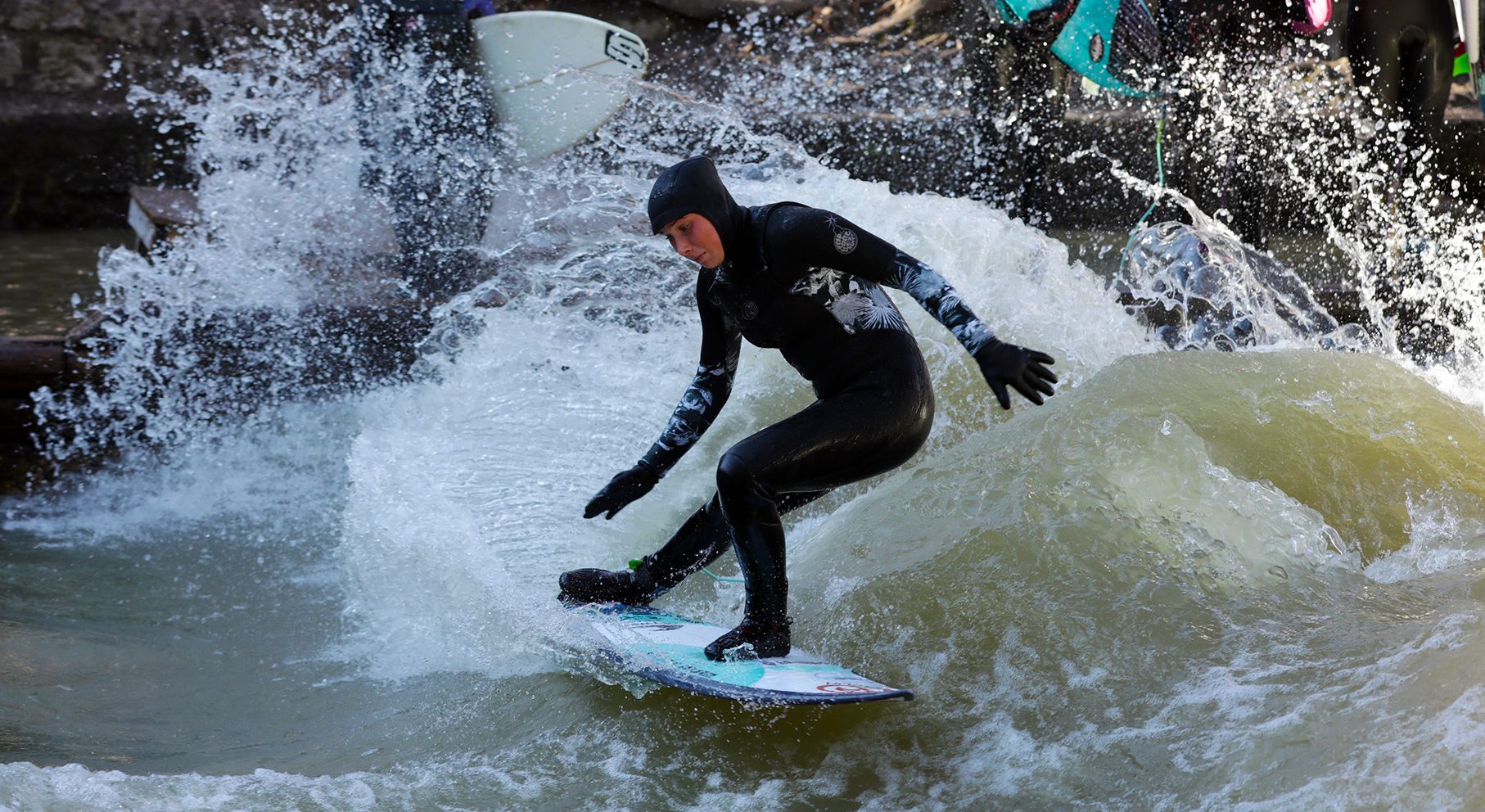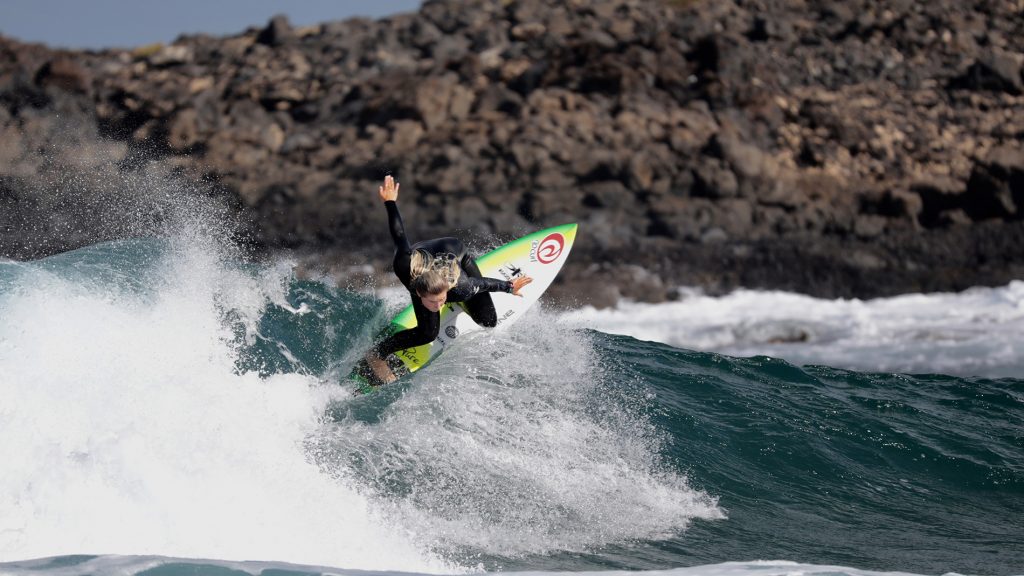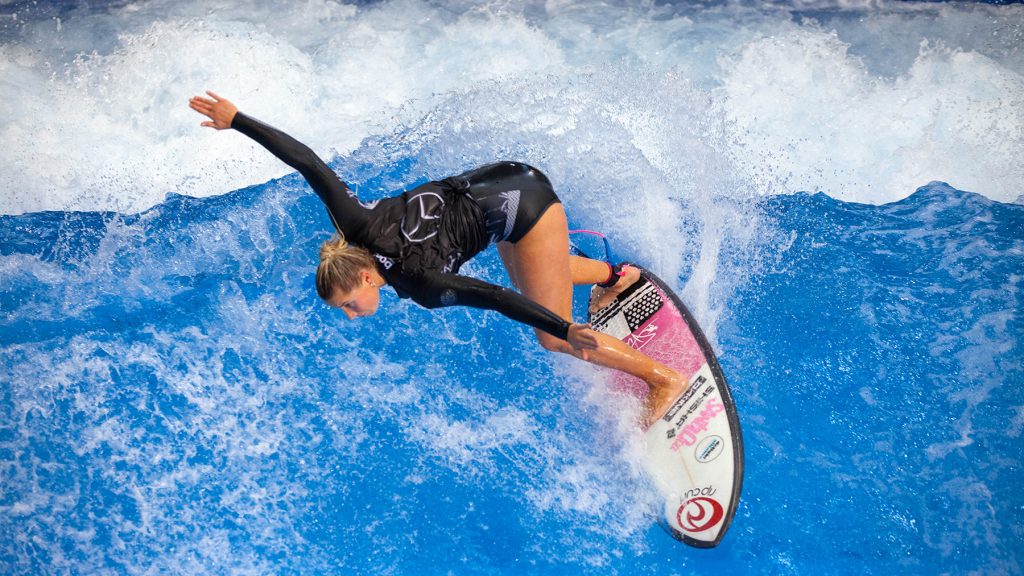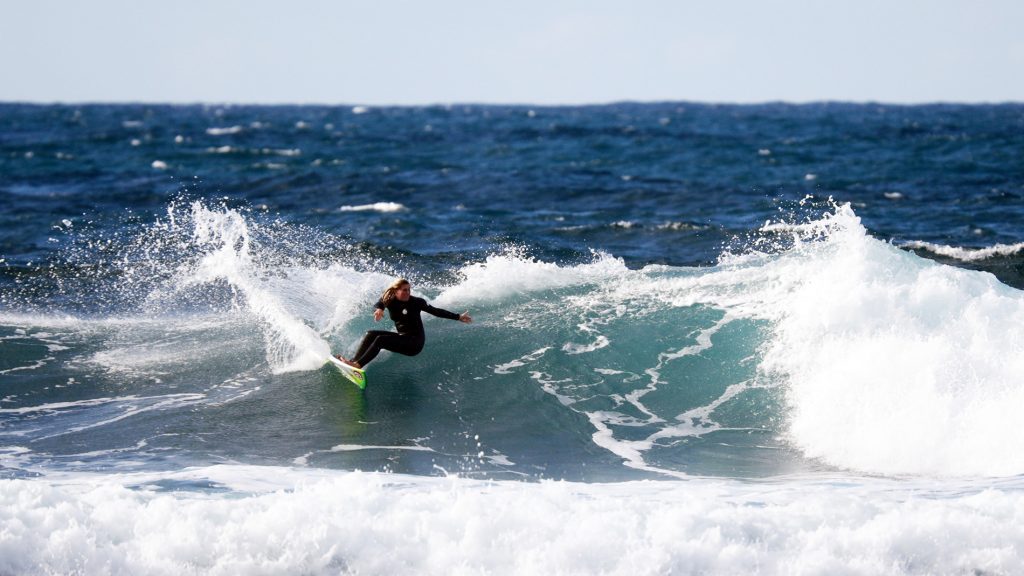Janina Zeitler: From the river to the sea to the pool

Find out how Janina Zeitler is bridging surf worlds: standing wave pools, river surfing
The 18-year-old Munich local learned to surf on the Floßlände – the Eisbach River wave’s kinder, gentler sister wave – before becoming a fixture in the Eisbach’s core scene, no easy feat in the urban hustle of Munich.
She soon branched out, salting her game with long stints at Euro hotspots in Southwest France, Portugal and the Canary Islands. She represented Germany at the ISA World Junior Championships.

Last year she claimed the Rapid Surf League Title with wins in Bratislava Slovakia and Langenfeld and hopes to represent Germany again in the ocean.
As wave pools expand, and surfing subcategories proliferate, we will see more pros like Janina crossing disciplines and redefining wave riding.
Where is your local spot?
My home spot is the “Eisbach” in Munich.
Tell us about your equipment. Do you need special boards for standing wave pools?
There are companies, that produce special riverboards. My riverboards are a lot smaller and have more volume in the top compared to my ocean boards. In the ocean, I normally ride boards 5’6” to 5’9” and in the river they run about 5’0” and 5’1”.
What is the surf scene like at the Eisbach?
Many years ago, surfing the Eisbach was strictly prohibited. The police often chased the surfers through the English Garden (the park surrounding the Eisbach) and confiscated their boards. In order to legalize surfing on the Eisbach, the surfers founded an interest group “IGSM” and when the film “Keep Surfing” came out in the cinema, the media also became aware of the surfing scene in Munich. Due to
But surfing on the Eisbach is not without danger, so only experienced surfers should surf the Eisbach. The current is very strong, there are vortices and the water is shallow. If you fall wrong, you can injure yourself on the rocks behind the wave. At the

For surfing in a small space, your turns are fairly drawn out instead of short, choppy hacks. Do you work on technique much?
Yes. I’m always on expanding my skills, especially in combining the elements of ocean and stationary wave riding. Besides I’m working to improve on some sophisticated, technical moves. For example different jumps and move combinations.
How does River compare to the ocean?
Surfing on the standing wave does not help my surfing in the sea directly because there are very different requirements in the ocean. Wave reading and paddling are very important in the ocean. On the river the focus is on smooth driving turns and mainly various tricks.
Actually, the mixture of both is perfect for me. Since I do not live near the ocean, the river or wave pool is a great way to constantly train.
Of course I use every opportunity during the school holidays to surf and train in the ocean. The style of ocean surfing is extremely important in order to get a nice flow going in stationary wave riding.

You represent Germany at the ISA World Games, is the transition from stationary to ocean difficult?
Of course, it takes about three days to get used to, but the more you train in both, the change will become easier and faster as well.
Tell us about your involvement with CityWave.de.
I am on the Citywave surf team and therefore I am often invited to wave openings to represent Citywave and do show sessions at the wave pool.
What excites you most about the coming wave pool boom? Do you think there will be a WavePoolTour like there is for the Rapid Surf League?
Surfing is a fascinating sport. and it’s great that people who don’t live near the ocean have the chance to try surfing. I think that a similar competitive tour at the wave pools is going to take place all around the world.
Trackback from your site.
Related Coverage
